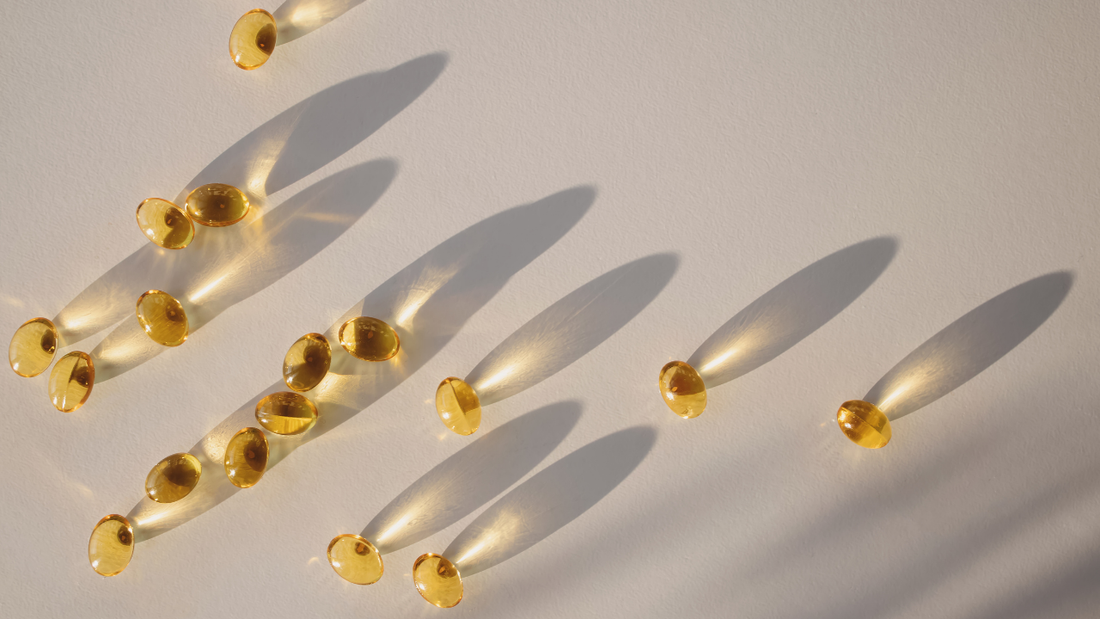Read Time: 6 min | Categories: Body Health | Vitamin D
The Ultimate Guide to Vitamin D
Webber Naturals
Share this article
Vitamin D is a unique vitamin. It’s essential in many of our body’s functions, and it’s produced in our bodies when we’re exposed to the sun.
Direct sunlight, meaning sunshine on bare skin, is our main source of vitamin D, outside of our diet. So when we don’t get enough sun exposure – because of where we live, seasonal changes, cloud cover, smog, and sunscreen – the amount of vitamin D our body creates is limited and may not meet our daily needs.
Because Canada is located far from the equator and doesn’t get much sun during the winter months, Canadians aren’t able to produce a lot of vitamin D. Even in parts of the country where there is a lot of sun in the winter, layers of clothing prevent us from absorbing the sunshine.

You can get vitamin D from certain foods, such as fatty fish, egg yolks, and cheese, but most of these foods only contain small amounts of vitamin D unless they’re fortified. It’s hard to maintain vitamin D levels from diet alone. This is where supplements can be a big help!
In this guide, we’ll break down the benefits of vitamin D, why it’s important, how much you need, and how to choose the best supplement for you.
Benefits of Vitamin D
Why do we need vitamin D anyway? Well, vitamin D actually does a lot of important things. It helps our bodies absorb calcium so we can develop and maintain strong bones and teeth. In fact, calcium can only reach its full bone-building potential if your body has enough vitamin D.
It also supports a healthy immune system, which allows our bodies to fight viruses and bacteria.
Recent studies have indicated that extremely low levels of vitamin D, known as Vitamin D deficiency, is a risk factor in more and more conditions, such as Seasonal Affective Disorder (SAD).
Why is Vitamin D Essential?
Without enough vitamin D, our bodies work far below their potential. Studies have shown that people with low levels of vitamin D were more likely to catch a cold or get the flu.[1]
Vitamin D deficiency can also contribute to muscle weakness, aches, and pains. As we age, our bodies become less able to create vitamin D in a form that they can use. In fact, studies show that higher levels of vitamin D are linked with a decreased risk of hip fractures in people over the age of 60.[2]
Sufficient vitamin D, calcium intake, along with a healthy diet and regular exercise, may reduce the risk of developing osteoporosis.
How much vitamin D should you get per day in Canada?
According to Health Canada, the daily recommended intake for vitamin D in Canadians varies by age. The table below outlines the daily recommended intake for specific age groups, along with the tolerable upper daily limit that each group can take.
The DRIs for Vitamin D[3]

What to Know About Vitamin D Deficiency
A large portion of the population is at risk of vitamin D deficiency, especially those of us who live in the Northern hemisphere, where we don’t get much sun.
Vitamin D deficiency occurs when the body has extremely low levels of vitamin D.
The following are some of the risk factors:
- Limited sun exposure
- A diet low in vitamin D-rich foods (fish, fish liver oils, animal fats) and vitamin D-enriched foods (cereal, orange juice)
- Darker skin tone – melanin-rich skin reduces vitamin D production in the skin.
- Living in higher latitudes, further away from the equator
- Obesity
- Age

In children, a severe deficiency of vitamin D causes rickets, which appear as incorrect growth patterns, weakness in muscles, pain in bones, and deformities in joints. This is extremely rare.
In adults, vitamin D deficiency is not quite as obvious. Signs and symptoms may include:
- Fatigue or drowsiness
- Bone pain
- Weakness and pain of the muscles and joints
- Mood changes or symptoms of depression
If you have been experiencing these symptoms, talk to your doctor. A vitamin D deficiency can be easily diagnosed through a blood test. Your doctor will order a test to measure the amount of vitamin D in your blood.
If your blood test indicates you have a vitamin D deficiency, you and your doctor should discuss options to help increase your vitamin D levels.
Some of the treatments they might recommend include:
- Increasing your exposure to the sun
- Increasing your intake of foods containing vitamin D or that are fortified with vitamin D
- Taking vitamin D supplements

What’s the difference between vitamin D and vitamin D3?
When you look for vitamin D supplements at the store, you’ll likely find vitamin D2 (also known as ergocalciferol) or D3 (also known as cholecalciferol) supplements. These are the two forms of vitamin D.
Vitamin D2 comes from plant sources, such as mushrooms. You can find many foods that have vitamin D2 added to them (usually milk or cereal that is labelled “fortified with Vitamin D”).
Vitamin D3 comes from animal sources, such as eggs and fish. You’ll also find that most over-the-counter vitamin D supplements are vitamin D3 instead of vitamin D2.
This is because vitamin D3 is the form that is created by our bodies when exposed to sunlight. That’s why it’s called “The Sunshine Vitamin.”
Multiple studies have indicated that vitamin D3 is more effective than vitamin D2 at raising vitamin D levels. [4][5]
How do you choose a vitamin D supplement?
When it comes to deciding which vitamin D supplement to take, choose one that has a potency between the Recommended Dietary Allowance and Tolerable Upper Intake Level. It’s always a good idea to consult your doctor to understand your vitamin D needs and to even check your vitamin D levels to see if you have a vitamin D deficiency.
When it comes to the format, it’s really up to you. Choose a format that you are comfortable taking and one that you can take regularly, so you can maintain healthy levels of vitamin D.

Webber Naturals Vitamin D
Our vitamin D is naturally sourced and formulated in British Columbia, Canada. Our promise of quality is engrained in our guiding principles. As a truly Canadian company, we want to provide only the highest quality vitamins and supplements for you and your family. Webber Naturals Vitamin D comes in a variety of formats, including softgels, liquid, gummies, and tablets.
As a carbon-neutral company, you can feel good purchasing from a company that not only wants to spread sunshine to Canadians but also to our planet.
